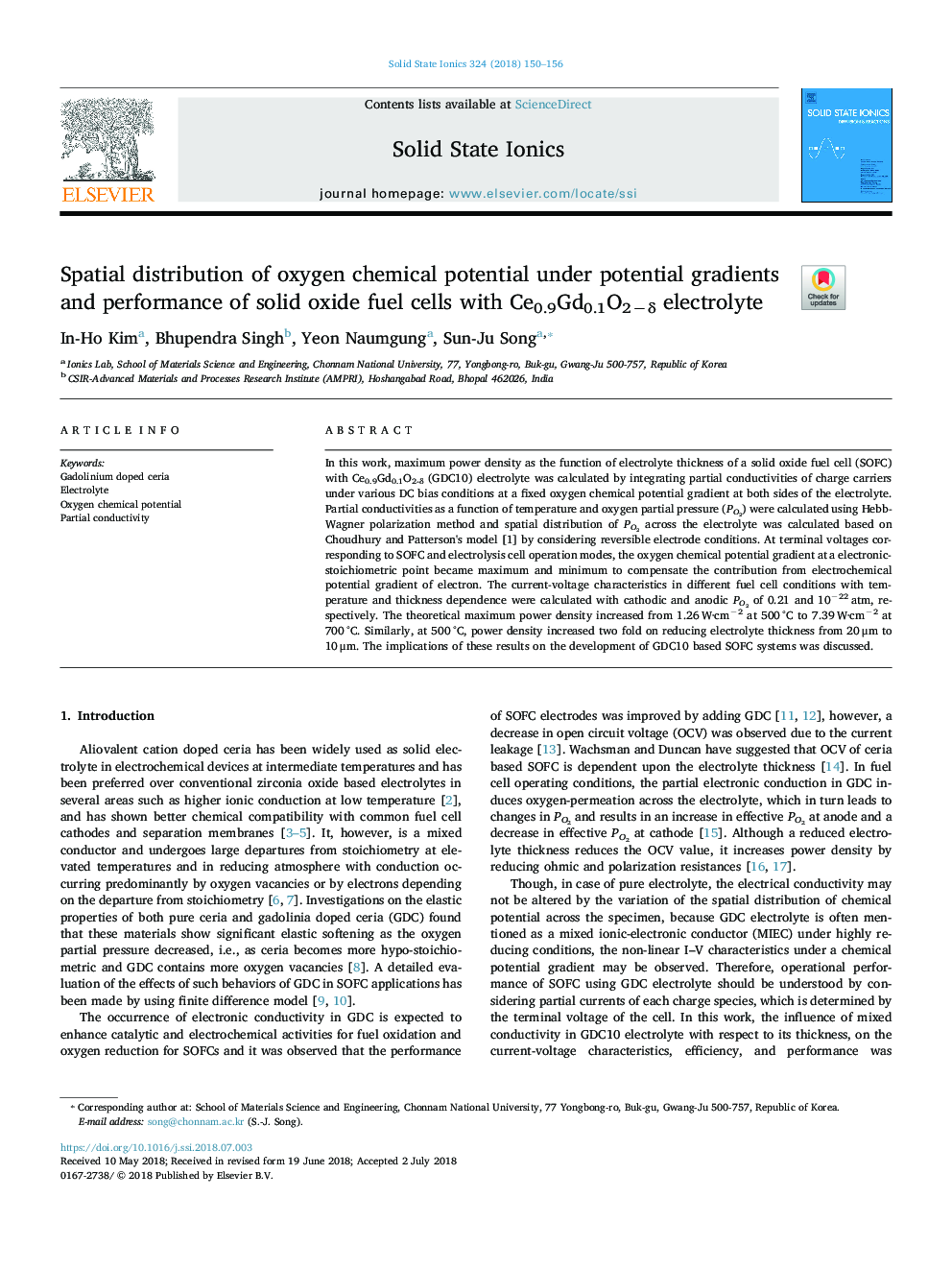| Article ID | Journal | Published Year | Pages | File Type |
|---|---|---|---|---|
| 7744193 | Solid State Ionics | 2018 | 7 Pages |
Abstract
In this work, maximum power density as the function of electrolyte thickness of a solid oxide fuel cell (SOFC) with Ce0.9Gd0.1O2-δ (GDC10) electrolyte was calculated by integrating partial conductivities of charge carriers under various DC bias conditions at a fixed oxygen chemical potential gradient at both sides of the electrolyte. Partial conductivities as a function of temperature and oxygen partial pressure (PO2) were calculated using Hebb-Wagner polarization method and spatial distribution of PO2 across the electrolyte was calculated based on Choudhury and Patterson's model [1] by considering reversible electrode conditions. At terminal voltages corresponding to SOFC and electrolysis cell operation modes, the oxygen chemical potential gradient at a electronic-stoichiometric point became maximum and minimum to compensate the contribution from electrochemical potential gradient of electron. The current-voltage characteristics in different fuel cell conditions with temperature and thickness dependence were calculated with cathodic and anodic PO2 of 0.21 and 10â22â¯atm, respectively. The theoretical maximum power density increased from 1.26â¯W·cmâ2 at 500â¯Â°C to 7.39â¯W·cmâ2 at 700â¯Â°C. Similarly, at 500â¯Â°C, power density increased two fold on reducing electrolyte thickness from 20â¯Î¼m to 10â¯Î¼m. The implications of these results on the development of GDC10 based SOFC systems was discussed.
Related Topics
Physical Sciences and Engineering
Chemistry
Electrochemistry
Authors
In-Ho Kim, Bhupendra Singh, Yeon Naumgung, Sun-Ju Song,
